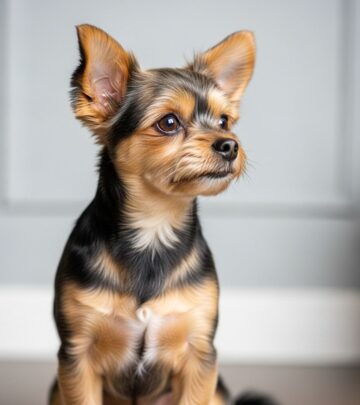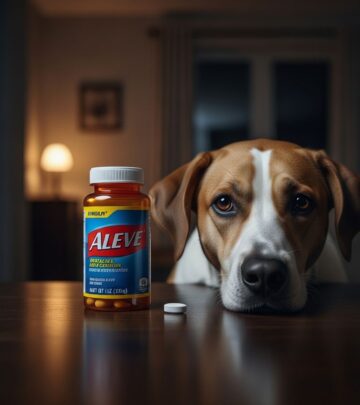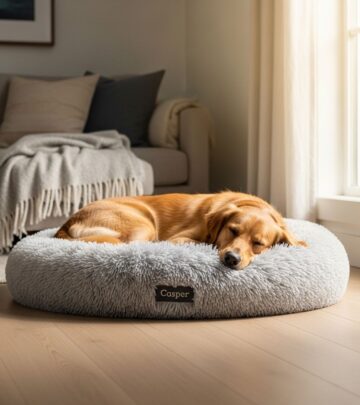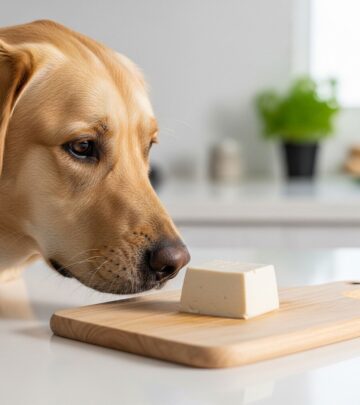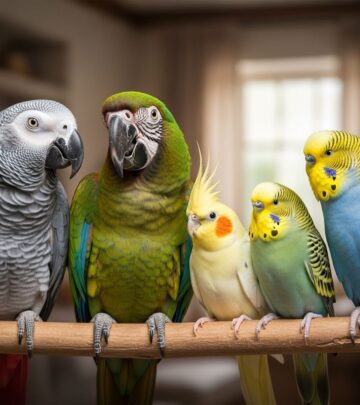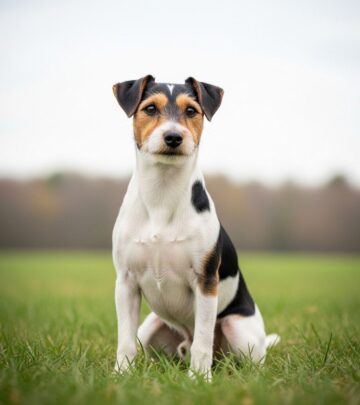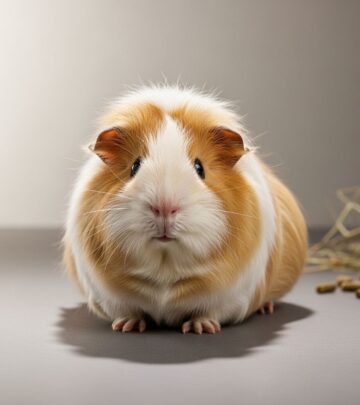American Bulldog Breed Guide: History, Care, Training & Health
Loyal companions needing patience, guidance, and love to thrive in any home environment.
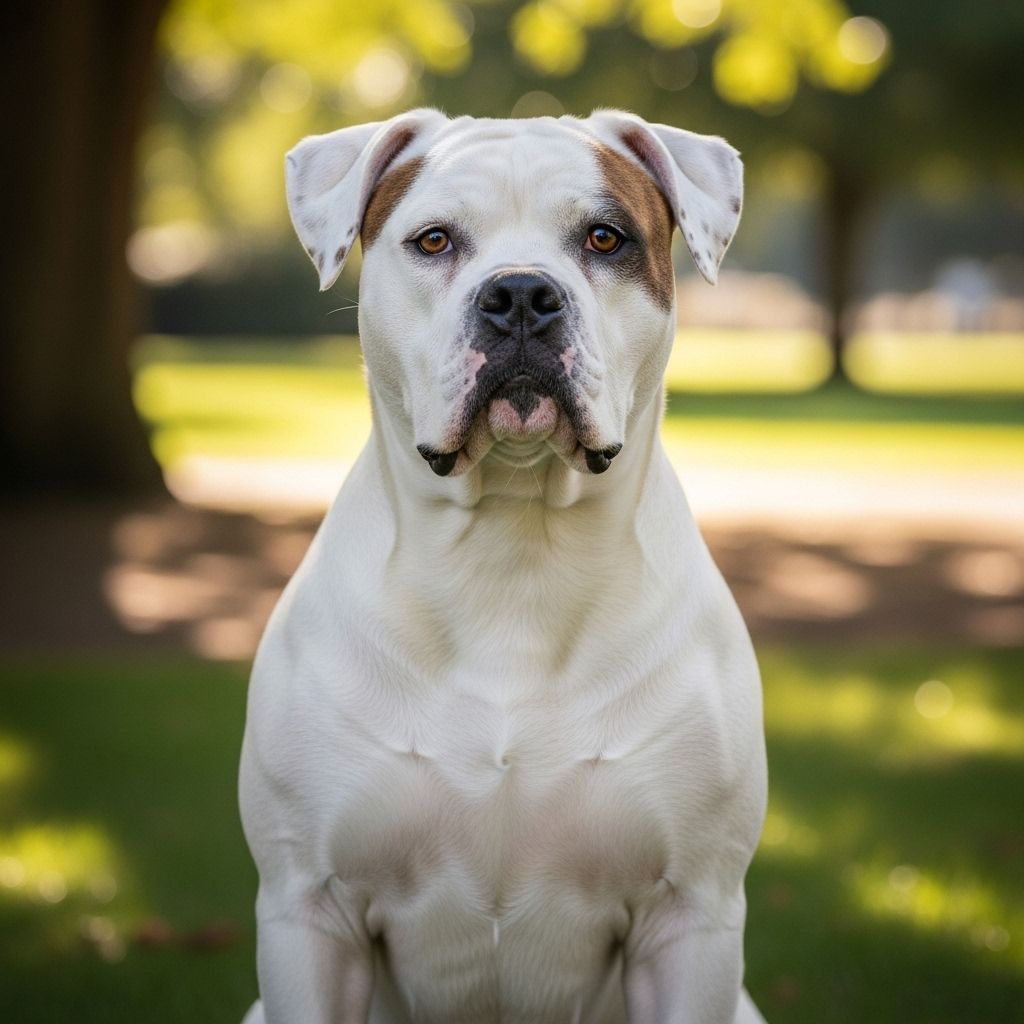
Image: HearthJunction Design Team
American Bulldog: Breed Overview
The American Bulldog is a powerfully built, muscular working dog that combines strength, agility, and determination. Descended from the working bulldogs of England, this breed has established itself as a versatile farm dog, loyal family companion, and effective guardian. With their impressive physical presence and affectionate nature, American Bulldogs have gained popularity among those seeking a devoted and protective canine companion.
These muscular dogs stand out with their broad heads, strong jaws, and athletic builds. Despite their intimidating appearance, well-socialized American Bulldogs are known for their gentle disposition with family members, especially children, while maintaining a natural protective instinct that makes them excellent watchdogs.
American Bulldog History and Origin
The history of the American Bulldog begins in the 17th century when English working-class immigrants brought their English Bulldogs to the American colonies. Unlike their English counterparts who were primarily bred for bull-baiting, these dogs were developed as all-purpose working dogs on farms throughout the American Southeast, particularly in Georgia, Alabama, and the Carolinas.
As settlers faced the harsh conditions of early American farm life, they needed versatile dogs that could perform various tasks. These bulldogs were used for catching feral cattle and pigs, protecting property from predators, and serving as loyal family guardians. Breeding decisions were based primarily on temperament and working ability rather than appearance or bloodlines.
Following World War II, the breed nearly faced extinction. Two men are widely credited with saving the American Bulldog from disappearing entirely: John D. Johnson and Alan Scott. Johnson traveled throughout the rural South searching for the best specimens to revitalize the breed. Alan Scott later joined this effort, eventually developing what would become known as the Standard or Scott-type American Bulldog by breeding Johnson’s dogs with working farm bulldogs.
Meanwhile, Johnson created what is now called the Bully, Johnson, or Classic type by crossing his original lines with an athletic English Bulldog from northern UK. The United Kennel Club officially recognized the American Bulldog as a distinct breed on January 1, 1999, and in November 2019, the American Kennel Club added the breed to its Foundation Stock Service.
Physical Characteristics
The American Bulldog is a substantial dog with a powerful, athletic build that reflects its working heritage. While there are two main types—the Scott (Standard) type and the Johnson (Bully) type—both share certain physical characteristics that define the breed.
Size and Weight
American Bulldogs are medium to large dogs with noticeable sexual dimorphism—males are typically larger than females:
- Males: 22-27 inches tall at the shoulder, weighing 70-120 pounds
- Females: 20-25 inches tall at the shoulder, weighing 60-100 pounds
Distinctive Features
The American Bulldog has several distinctive physical characteristics that set it apart from other breeds:
- Broad, powerful head with a well-defined stop
- Strong, muscular neck and shoulders
- Deep chest and well-sprung ribs
- Square or slightly rectangular body
- Strong, straight legs with substantial bone
- Short, stiff coat that comes in various color patterns (primarily white with patches of color)
Scott vs. Johnson Types
The two main types of American Bulldogs differ in several ways:
- Scott (Standard) Type: More athletic and leaner with a longer muzzle, narrower head, and less pronounced jowls. These dogs were bred for greater speed and agility.
- Johnson (Bully) Type: Heavier and more muscular with a broader head, shorter muzzle, and more pronounced jowls. These dogs more closely resemble the traditional bulldog appearance.
Temperament and Personality
The American Bulldog is characterized by its loyalty, courage, and affectionate nature. Despite their imposing appearance, these dogs are typically gentle giants with their families while maintaining a natural protective instinct that makes them excellent guardians.
Key Personality Traits
- Loyalty: American Bulldogs form strong bonds with their families and are known for their unwavering devotion.
- Protective: They have a natural instinct to protect their home and family, making them excellent watchdogs.
- Affectionate: With family members, especially children, American Bulldogs are typically gentle and affectionate.
- Confident: These dogs generally display a self-assured demeanor and are not easily intimidated.
- Determined: Their working heritage has instilled a strong work ethic and determination.
Behavior with Family and Strangers
American Bulldogs are typically devoted family dogs that form strong bonds with their owners. They generally do well with children when properly socialized and supervised, though their size and strength mean interactions should always be monitored. While naturally affectionate with family, they can be reserved or cautious with strangers, making early socialization crucial to develop appropriate responses to new people.
Compatibility with Other Pets
American Bulldogs can get along well with other family pets when raised together from a young age. However, some individuals may show dog-aggression or prey drive toward smaller animals due to their working heritage. Proper socialization from puppyhood and careful introductions can help manage these tendencies.
Care Requirements
Providing proper care for an American Bulldog requires understanding their specific needs for exercise, nutrition, grooming, and health monitoring. Meeting these requirements will help ensure your American Bulldog lives a healthy, happy life.
Exercise Needs
American Bulldogs are energetic, athletic dogs that require regular exercise to maintain physical and mental health. These working dogs need more than just a casual walk around the block—they thrive with activities that challenge them physically and mentally:
- Daily walks (at least 30-60 minutes total)
- Play sessions in a securely fenced yard
- Agility or obedience training
- Supervised swimming (many American Bulldogs enjoy water)
- Interactive toys that stimulate their minds
Nutritional Requirements
A proper diet is essential for maintaining the health of these muscular dogs. American Bulldogs typically benefit from high-quality dog food formulated for large, active breeds. The amount should be adjusted based on the dog’s age, weight, activity level, and metabolism.
Adult American Bulldogs typically need 2-3 cups of quality dry food daily, divided into two meals. Puppies require more frequent feeding with food specially formulated for large-breed puppies to support proper growth. Always ensure fresh water is available, and monitor your dog’s weight to prevent obesity, which can exacerbate joint problems in this breed.
Grooming Needs
The American Bulldog’s short coat is relatively easy to maintain but still requires regular attention:
- Brushing: Weekly brushing with a firm bristle brush helps remove dead hair and distribute skin oils.
- Bathing: Bathe only when necessary, typically every 2-3 months or when dirty, using a gentle dog shampoo.
- Nail trimming: Regular nail trims (usually every 3-4 weeks) are essential to prevent discomfort and mobility issues.
- Dental care: Regular teeth brushing and dental chews help maintain oral health.
- Wrinkle care: For bulldogs with facial wrinkles (especially Johnson type), check and clean between folds regularly to prevent infections.
Training and Socialization
Proper training and socialization are essential for American Bulldogs to develop into well-behaved companions. These intelligent dogs respond well to consistent, positive reinforcement methods but can be independent-minded and may test boundaries without proper leadership.
Training Approach
The most effective training approach for American Bulldogs includes:
- Positive reinforcement: Reward-based methods using treats, praise, and play work best for this breed.
- Consistency: Establish clear rules and boundaries and enforce them consistently.
- Early start: Begin training as soon as you bring your puppy home, using short, engaging sessions.
- Patience: American Bulldogs can be stubborn at times; remain patient and avoid harsh corrections.
- Leadership: Establish yourself as a calm, confident leader rather than using dominance-based methods.
Socialization Needs
Proper socialization is particularly important for American Bulldogs due to their protective nature and strength. Expose your puppy to various people, animals, environments, and situations during their critical socialization period (before 16 weeks) and continue throughout adolescence. This helps ensure they develop into confident adults who can distinguish between normal situations and genuine threats.
Socialization should include positive experiences with:
- People of different ages, appearances, and behaviors
- Other dogs and animals (under controlled conditions)
- Various environments (urban areas, parks, etc.)
- Different sounds, surfaces, and objects
Health Considerations
American Bulldogs are generally healthy dogs with a lifespan of 10-15 years, but like all breeds, they are predisposed to certain health conditions that potential owners should be aware of.
Common Health Issues
- Hip and elbow dysplasia: Developmental abnormalities of the joints that can lead to pain and mobility issues.
- Neuronal ceroid lipofuscinosis (NCL): A genetic neurological disorder that can cause progressive neurological decline.
- Ichthyosis: A genetic skin condition causing dry, scaly skin.
- Cherry eye: Prolapse of the gland of the third eyelid, requiring surgical correction.
- Entropion/ectropion: Eyelid abnormalities that may require surgical intervention.
- Allergies: Food and environmental allergies can cause skin problems and discomfort.
- Thyroid issues: Hypothyroidism is relatively common in the breed.
- Brachycephalic airway syndrome: More common in the Johnson type with shorter muzzles, causing breathing difficulties.
Preventative Care
To maintain optimal health for your American Bulldog, establish a regular preventative care routine including:
- Annual veterinary check-ups (semi-annual for seniors)
- Regular vaccinations as recommended by your veterinarian
- Monthly parasite prevention for heartworms, fleas, and ticks
- Regular dental care
- Weight management to prevent obesity
- Monitoring for signs of joint problems or discomfort
Is an American Bulldog Right for You?
The American Bulldog can be a wonderful companion for the right owner, but this breed isn’t suitable for everyone. Consider the following factors when determining if an American Bulldog would be a good fit for your lifestyle and household.
Ideal Home Environment
An ideal home for an American Bulldog includes:
- Active owners who can provide daily exercise
- Secure fencing to contain this powerful breed safely
- Sufficient space for the dog to move comfortably
- Owners committed to consistent training and socialization
- Limited time alone, as these dogs bond closely with their families
Challenges of Owning an American Bulldog
Potential owners should be prepared for these challenges:
- Significant exercise requirements
- Powerful dogs that require proper handling and training
- Potential for dog aggression if not properly socialized
- Protective instincts that need to be appropriately channeled
- Possible housing restrictions in some communities
- Drooling, especially in the Bully type
Finding an American Bulldog
If you’ve determined that an American Bulldog is the right breed for you, the next step is finding a reputable source for your new companion. Whether adopting or purchasing, taking the time to find a responsible source will increase your chances of bringing home a healthy, well-tempered dog.
Adoption Options
Consider these adoption sources for finding an American Bulldog:
- Breed-specific rescues dedicated to American Bulldogs
- General animal shelters and rescue organizations
- Online adoption resources that connect adopters with available dogs
Choosing a Responsible Breeder
If purchasing from a breeder, look for these qualities:
- Health testing of breeding stock for genetic conditions common in the breed
- Clean, spacious facilities where dogs appear happy and well-socialized
- Knowledge and enthusiasm about the breed
- Willingness to answer questions and provide references
- Ongoing support after purchase
- Proper veterinary care for puppies before placement
Frequently Asked Questions (FAQs)
Q: Are American Bulldogs the same as Pit Bulls?
A: No, American Bulldogs and Pit Bulls (American Pit Bull Terriers) are distinct breeds, though they share some common ancestry. American Bulldogs are generally larger, with different physical characteristics and were bred primarily as working farm dogs rather than for dog fighting.
Q: Are American Bulldogs good with children?
A: Well-socialized American Bulldogs are typically excellent with children in their family. However, due to their size and strength, interactions should always be supervised, especially with young children.
Q: How much exercise does an American Bulldog need?
A: American Bulldogs are athletic, energetic dogs that require at least 1-2 hours of exercise daily, including walks, play sessions, and mental stimulation activities.
Q: Do American Bulldogs have health problems?
A: Like all breeds, American Bulldogs are predisposed to certain health conditions including hip dysplasia, skin issues, and certain genetic disorders. Working with a reputable breeder who conducts health testing can reduce these risks.
Q: Are American Bulldogs aggressive?
A: Properly bred and socialized American Bulldogs are not inherently aggressive toward humans. They are protective of their families and may be reserved with strangers, but true aggression is not a standard trait of the breed. Some may show dog-aggression if not properly socialized.
References
Read full bio of Shinta

